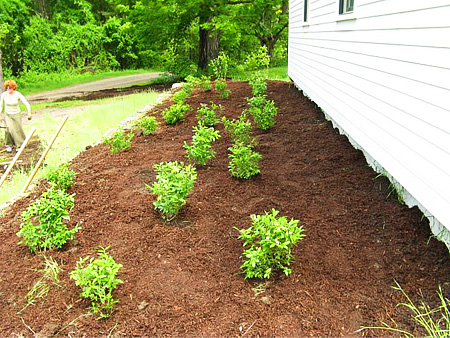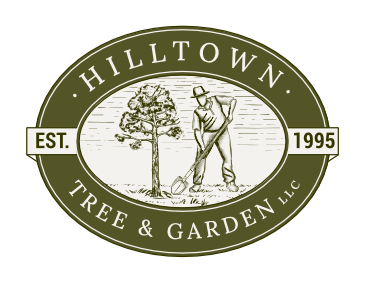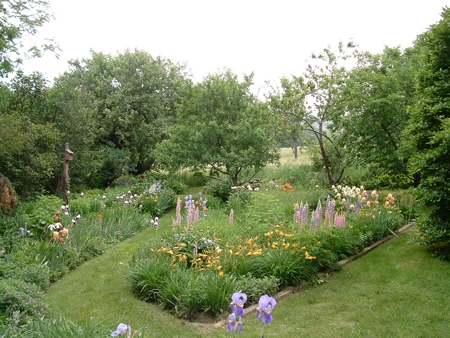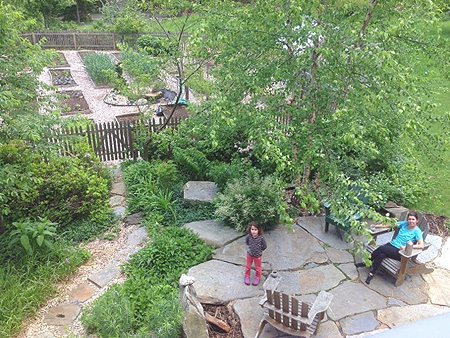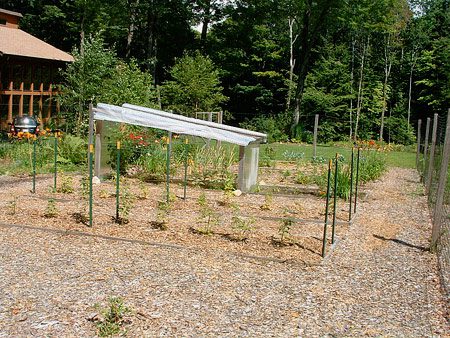I was approached by the Bullitt Reservation Property Manager for The Trustees of Reservations Wendy Sweetser. She asked me about volunteering and coordinating a proposed native and sustainable landscape project in Ashfield MA. at the Bullitt Reservation. As a lover of native plants, and as a longtime member of the Trustees, I jumped at the opportunity to collaborate. Bullitt is a new 260 acre property of The Trustees in Ashfield and Conway. The farmhouse was renovated to be a model of residential-scale energy efficiency, and we wanted the surrounding landscape to reflect that. Our goal was for the new plantings to contribute to the wildlife values of the nearby field with active bird and butterfly populations, provide an aesthetically pleasing entry to the building, and be low-maintenance.
We started with the premise that all plants used had to be: locally sourced, indigenous to the area, be able to sustain themselves with minimal maintenance and will be wildlife friendly. What I believe landscapes should be is exactly what the Trustees of the Reservations were hoping to have me design. Working with Wendy we first did a site evaluation. Based on a myriad of factors (soil, drainage, micro climates, maintenance, etc.) parameters were established. A plant list was decided on. Then, based on the above stated goals, a design was drawn, plants were sourced and volunteers were lined up.
On the days of installation all went smooth. And while the landscape is now installed I will still be collaborating with the Trustees about its future maintenance and about the possible installation of a native tall grass wildflower meadow around the building.
The following is a list of plants used: (the plant list was very carefully reviewed for species that are native and hardy)
- Trees: disease resistant American elms “Valley Forge” & crabapples
- Shrubs: high & lowbush blueberries, chokeberries, elderberry & aronia
- Perennials: Joe Pye, New England and New York aster, Solomon seal, sweet fern, bee balm, baptisia, coneflowers & N.Y. ironweed.
- Native Tall Grasses: Panicum & Little Blue Stem
Before: An annual cover crop of rye was planted the previous fall. The benefits of this are: soil stabilization, fertility & weed suppression.

After: Jim standing in the midst of the landscape under construction. Behind him can be seen the crabapples “Adams” in front of him is the winterberry holly & high bush blueberries.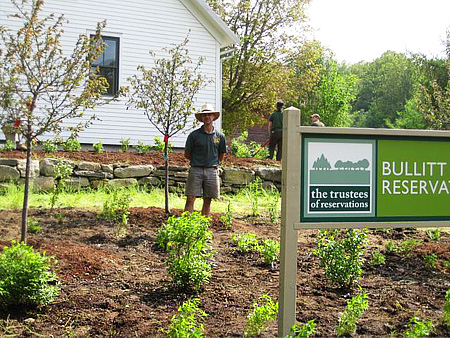
Before: The simplicity of the houses constrution is asking for an equally simple landscape. Natural and lacking any bit of pretentiousness.

After: Visible in this photo is a disease resistant American Elm “Valley Forge”. The elm was chosen because it was native, hardy & deciduous. The deciduous component will allow it to shade the building in the summer while letting the warming winter sun in when the leaves fall. The grasses are a mix of panicum and little blue stem. The shrubs to the left of the door are elderberries which are both ornamental and edible.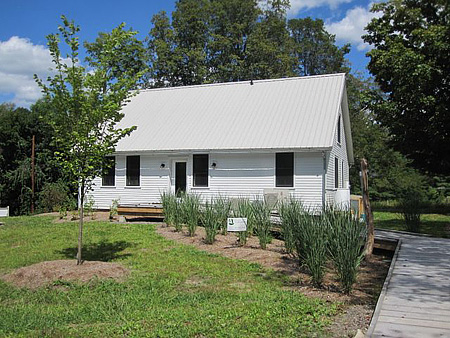
Jim is supervising the plantings of the American Elms. The majority of transplanted trees come from the nurseries as “B&B” (balled and burlaped). Jim is a strong advocate of removing as much of the burlap as possible along with the wire cage that gives the rootball its structural integrity during its transporting. Also, see how the grade around the trunk had to be lowered (see dark mark) as it was improperly planted during its infancy.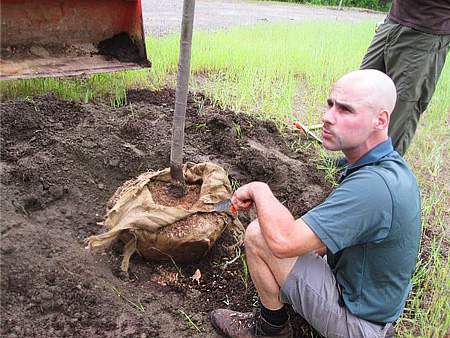
Compost is worked into the soil to improve fertility and its water-holding capacity. Then elderberries are planted in the moisture rich soil they love. The elderberries have purple berries that will look great against the white building. Or they can look even better in a jar of jam.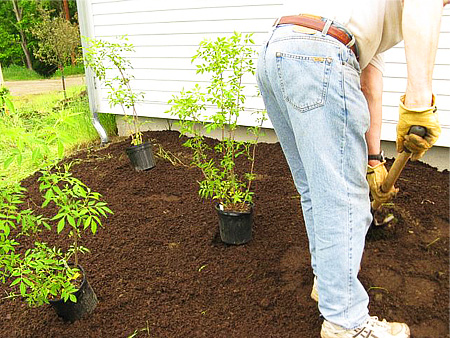
Grasses being installed in a compost rich bed. Both panicum and little bluestem were used for the following reasons: native, drought and low fertility tolerant, low maintenance & 4 seasons of interest. All important characteristics for a plant so close to a walkway that will receive regular year round visual scrutiny.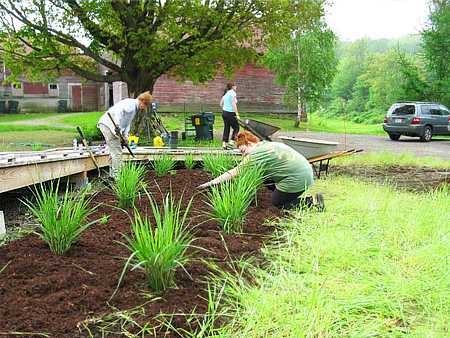
More American Elms being planted.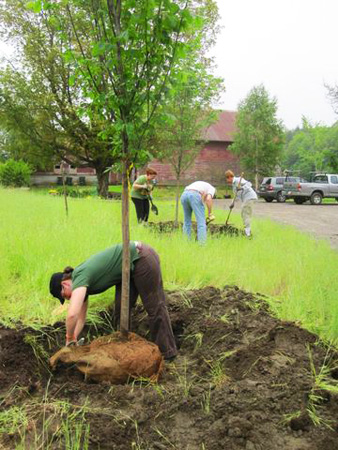
On the west side low bush blueberries were planted. These were chosen for a myriad of reasons: blueberries can tolerate low light conditions, low moisture & fertility, will not grow taller then 18″, will spread as a ground cover, are edible to both people and animals & finally the fall colors in front of the white building will be impressive. This side of the building also had lots of compacted fill for soil. It required us to amend the soil with compost for this low growing acid loving native.